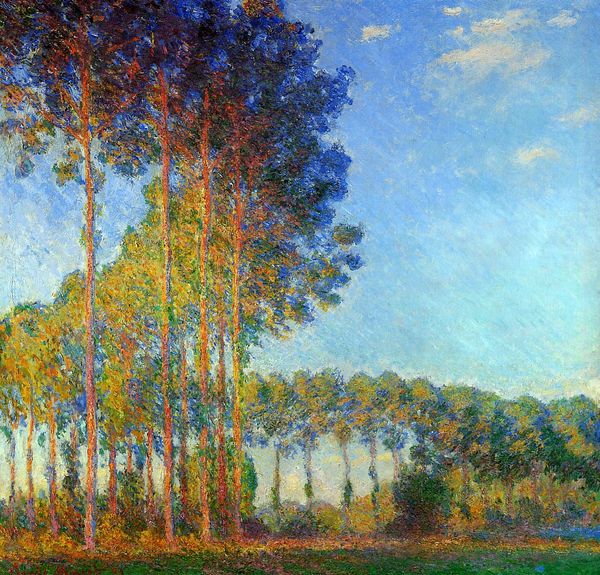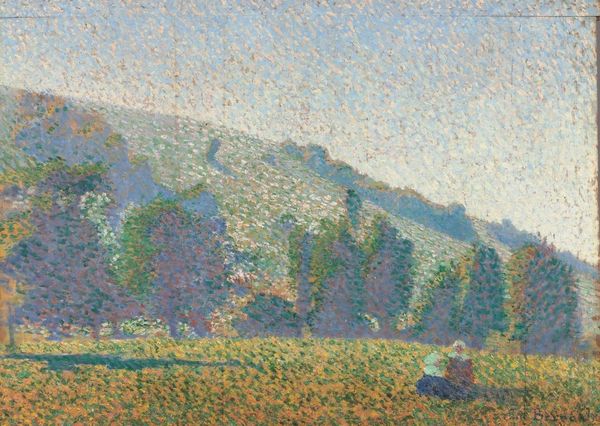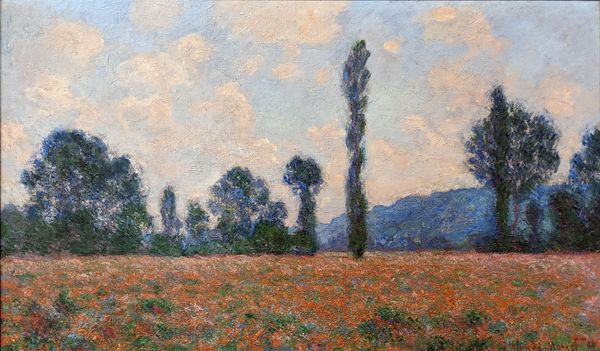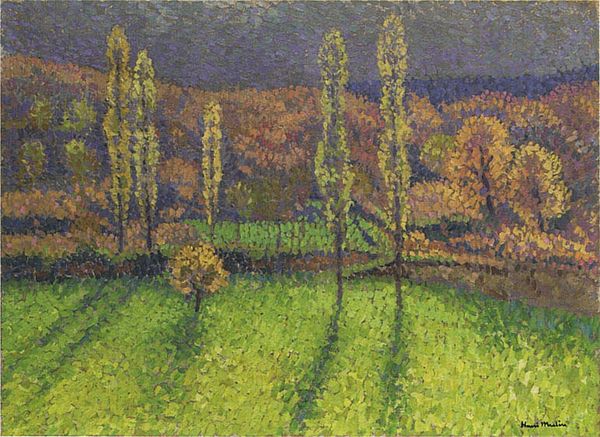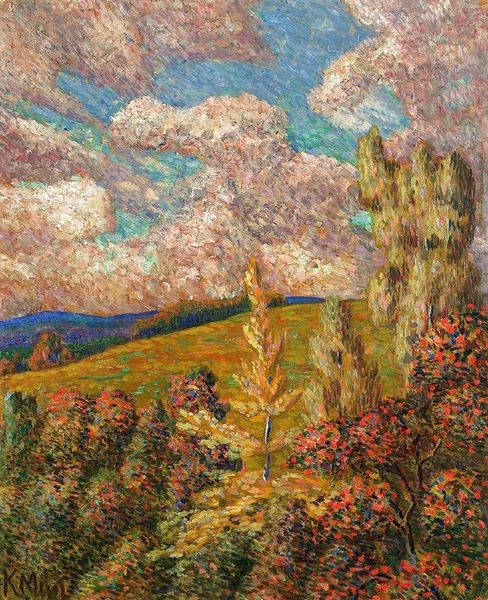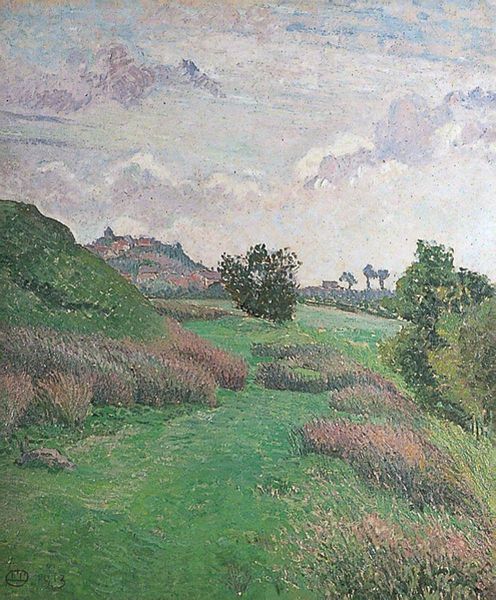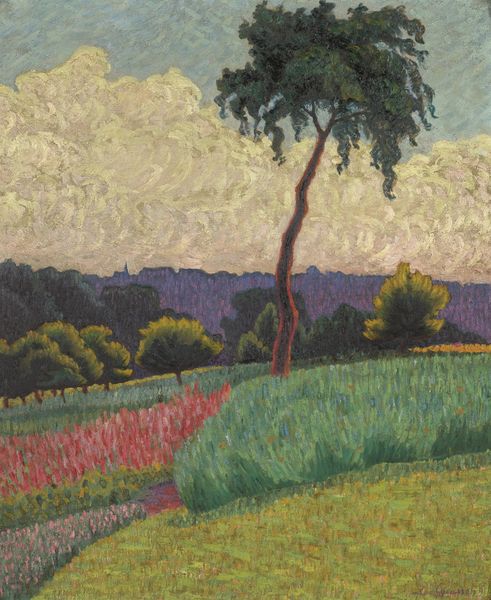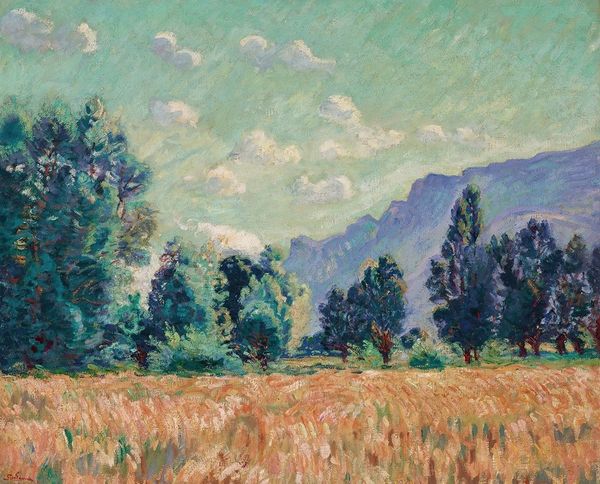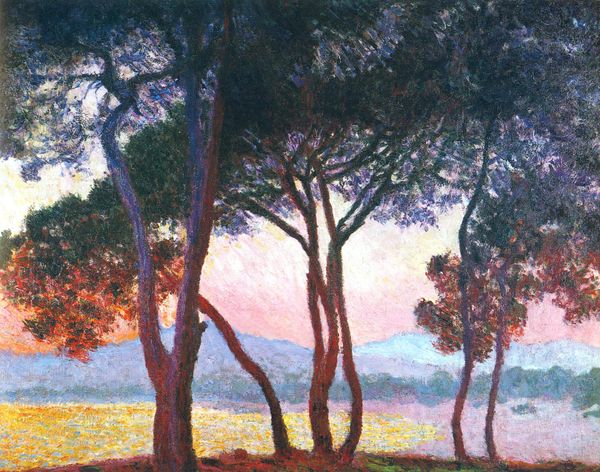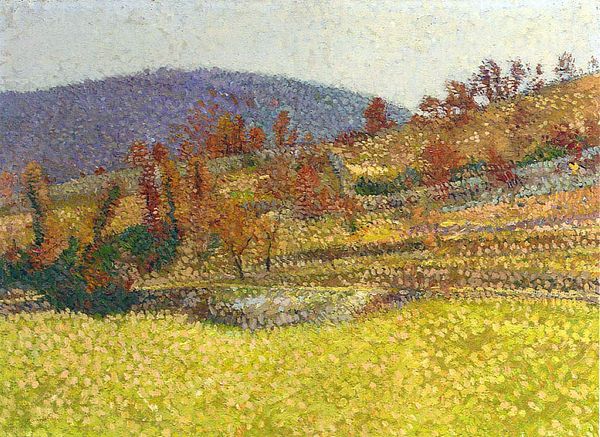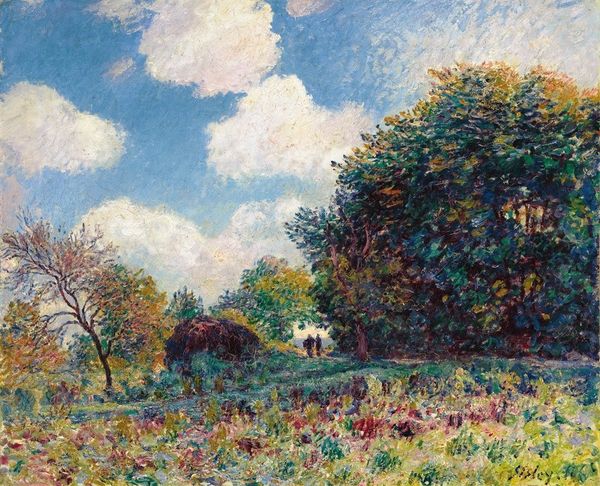
Copyright: Public domain US
Curator: This is "Paysage aux deux Cyprès," painted in 1905 by Jean Metzinger, a beautiful example of his Neo-Impressionist explorations. Editor: It’s striking. The air shimmers with all those tiny dots, the color palette feels almost like a hazy memory of a summer day. There's a stillness and quiet here, almost meditative. Curator: Metzinger, at this stage, was deeply engaged with the theories of Signac and Seurat, translating their scientific approach to color onto canvas. Think of it as controlled chaos. Each dab of paint is carefully placed according to color theory principles. This landscape becomes more of an arrangement of sensations, reflecting Metzinger's interests and affiliations. Editor: Yet, it doesn’t feel clinical, does it? The emotion isn’t sacrificed for the technique. There's a distinct sense of place. I imagine this specific environment with all its sociocultural underpinnings of rural or vacation space being depicted. It gives us an impression of a harmonious space. Curator: Exactly! We need to remember the artistic landscape Metzinger was a part of. Neo-Impressionism wasn’t just about the science; it was about representing the changing modern world. Consider the rise of the bourgeoisie who might have identified with leisure images like this. Metzinger wasn't uncritical though; there are subtle nods to class tensions within these seemingly peaceful scenes. Editor: Looking closely at the geometric elements amidst the organic shapes, could those shapes perhaps reflect the beginning of his experiments with Cubism? How it plays with planes and spatial ambiguity and offers a space for new perspectives to come to fruition? Curator: An astute observation! It shows how artists at that moment in time experimented with the possibilities offered by the post-impressionist moment while hinting at future innovations to come. Editor: Being here in front of it helps to recognize that while Metzinger might be drawing from a certain science of optics, the resulting feeling is very human. It opens up questions about our relationship to both landscape and the culture in which it resides. Curator: Absolutely. And to appreciate the revolutionary effect of the pointillist and impressionist experiments in visualizing modernity at that historical moment. Editor: Looking again, I notice that in its delicate beauty, there’s still room to ponder the artist’s intent, to feel something familiar and new all at once. Curator: Indeed. Its impact still lingers, encouraging us to consider how landscapes shape our perceptions.
Comments
No comments
Be the first to comment and join the conversation on the ultimate creative platform.
